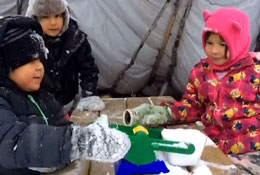Curriculum
Curriculim: Measurement
From the Ontario Ministry of Education Kindergarten Curriculum
- 2.2: demonstrate a willingness to try new experiences (e.g., experiment with new materials/tools; try out activities in a different learning area; select and persist with things that are challenging; experiment with writing)and to adapt to new situations (e.g., having visitors in the classroom, having a different educator occasionally, going on a field trip, riding the school bus)(SRWB)
- 3.2: demonstrate the ability to take turns during activity and discussions (e.g., while engaged in play with others; in discussions with peers and adults) (SRWB)
- 13.2: make predictions and observations before and during investigation (PSI)
- 13.3: select and use materials to carry out their own explorations (PSI)
- 13.4: communicate results and findings from individual and group investigations (e.g., explain and/or show how they made their structure; state simple conclusions from an experiment; record ideas using pictures, numbers, and labels) (PSI)
- 16.2: investigate strategies and materials used when measuring with non-standard units of measure (e.g., why feet used to measure length must be placed end to end with no gaps and not overlapping, and must all be the same size; why scoops used to measure water must be the same size and be filled to the top) (DLMB)
Context
- Introduce students to the concept of balancing scales
Materials
- Balance scales
- Items to balance (e.g. small cubes, Lego pieces, beads)
Lesson
Introduction
- Bring out a balance scale and have a discussion about it
- Use the following prompts
- What do you think the scale is for?
- How would you use it?
- What does a scale tell you?
- What are the different parts?
Lesson
- Explore how a scale can show how much one object weighs in comparison to another object
- Divide students into small groups and provide them with a balance scale and materials (e.g. small cubes)
- Ask students to try an make the scale balance
Closure
- Have a discussion on student’s experience of using the balance scales
- Use the following prompts:
- Did you get the scale to balance?
- How did you know the scale was balanced?
- Was it easier or harder to get the scale to balance with certain materials?
- Encourage the use of vocabulary: balance, heavy, light
Extension
Balancing Scales Outside


